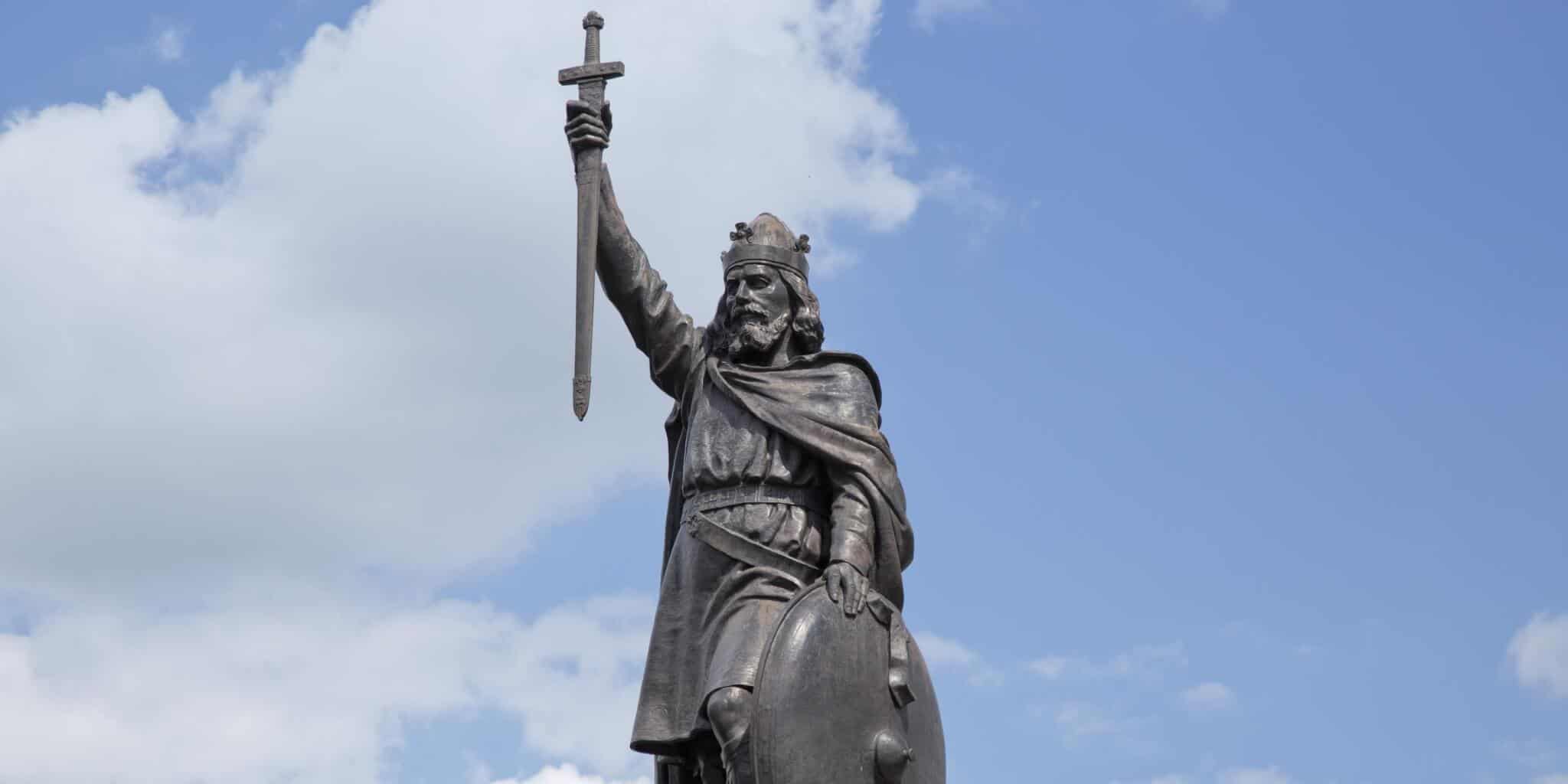The Search for King Alfred the Great
With all of the media attention surrounding the recent discovery of King Richard III’s bones in a Leicester car park, archaeologists from across the country are now turning their attention to the next great unsolved mystery of the monarchs; the final resting place of King Alfred the Great.
Led by the University of Winchester, the project’s complexity is expected to overshadow even that of the Richard III dig, not just because Alfred’s remains are some 580 years older, but also because finding a close DNA match to the King of Wessex could prove to be a monumental task.
Over the next few months Historic UK will be following the project from beginning to end, with regular updates being posted on this page.
Background
King Alfred the Great died on the 26th October 899, probably through complications arising from Crohn’s Disease, an illness which forces the body’s immune system to attack the linings of the intestines.

His first burial was in Winchester‘s Old Minster although his remains were subsequently moved next door to the New Minster a few years later. When the New Minster was demolished in 1098 to make way for a new, much larger Norman cathedral, Alfred’s body was reinterred at Hyde Abbey just outside of the Winchester City Walls.
His body lay here undisturbed for some 400 years until the abbey was destroyed by King Henry VIII’s Dissolution of the Monasteries in 1539. However, quite miraculously the graves were left untouched by the destruction of the abbey and they remained in situ for the next 200 years.
In 1788, when a new county gaol was being built by convicts near the site of the old abbey, the graves were once again found.
Unfortunately the convicts stripped the coffins of their materials and left the bones scattered in the ground, probably including the remains of King Alfred himself.
Since then, no definitive remains of Alfred have ever been found, although excavations in the late 19th century led archaeologists to claim they had identified his bones. These remains went on display in Winchester for a short time before being reburied near to their original position in St Bartholomew’s Church.
The 2013 Search for Alfred
It is thought that the remains of Alfred now lie in an unmarked grave in the grounds of the 12th century St Bartholomew’s Church (see the Google Street View image below), and in February 2013 the church and the University of Winchester started seeking permission for an excavation on the site. This will require permission from a diocesan advisory panel on the Church of England, as well as the permission of English Heritage, and a decision is not expected until the spring. Until then, the whereabouts of one of England’s greatest monarchs will remain one of the country’s greatest mysteries…
Frequently Asked Questions
How difficult would it be to identify the bones of King Alfred?
Difficult, but not impossible.
Firstly, there is no complete skeleton, only a scattering of bones from around five different bodies (including those of his wife and children). Matching these up and then identifying them would prove to be much more difficult than that of Richard III whose remains were relatively well intact.
Secondly, the age of the bones (almost 600 years older than Richard III’s remains) also makes DNA testing exceptionally difficult. To complicate matters further, Alfred’s modern day descendants would be difficult to trace and also have a greater ‘dilution’ of DNA than Richard III’s ancestors.
Would carbon dating be enough to prove the identity of King Alfred?
Perhaps. As Hyde Abbey was not built until the 12th century, and Alfred died in the 10th century, there would be little reason for any 10th century remains to be in the area. Therefore, if the bones date from around the late Anglo-Saxon era, then there is strong evidence to suggest that they are those of Alfred.
What is the likelihood of the project going ahead?
This is a difficult one to answer as there is little precedent to go on, but after discussion in the Historic UK office we put the odds at a favourable 60 / 40. Fingers crossed that it does!
